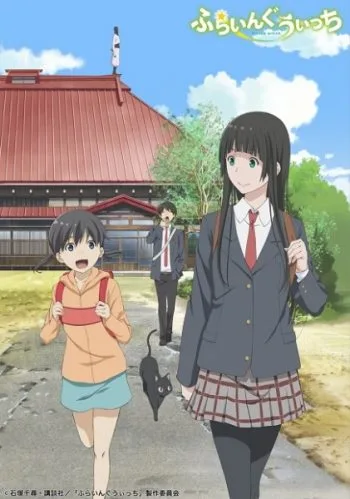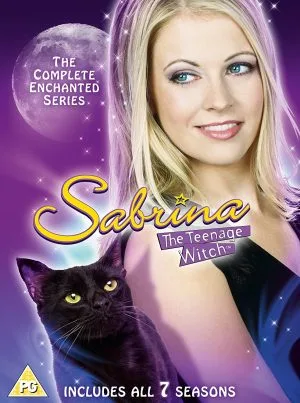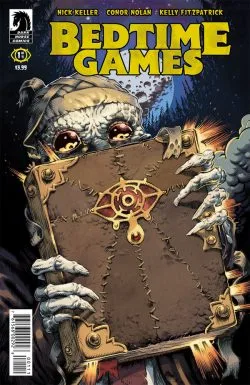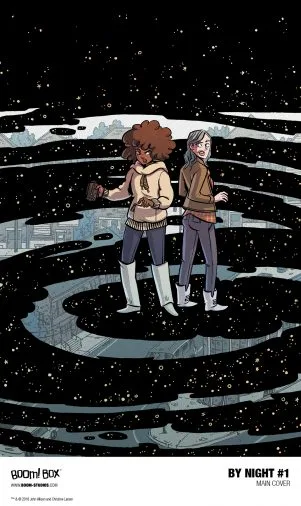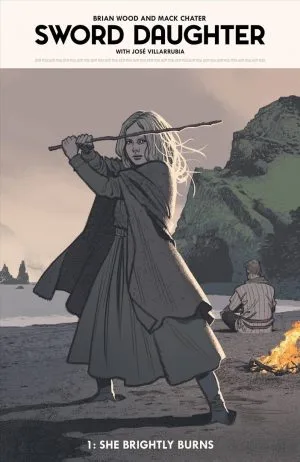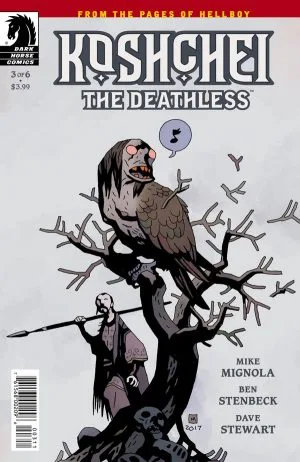
The comic is centered in the middle of the Hellboy in Hell story arc, as Hellboy takes a break from fighting his destiny to meet with his old nemesis Koshchei in a bar somewhere on the shores of Hell’s ocean. What starts as a meeting between two dead foes, long tired from fighting each other, soon turns into Koshchei telling his companion his life story; and boy oh boy, is it a hell of a life. Born to common parents, Koshchei quickly climbs the ranks of army life before being left for dead by his own soldiers. Luckily, a dragon happened to be passing by and rescued him. For nine years, he toiled away as the dragon’s servant before being set free with a magical shirt that protected him from death. Unfortunately, not everyone was happy with his return and after learning that his shirt kept him alive, he was stripped and killed, and once again back in the possession of the dragon, who this time grants him immortality as long as he hides his soul away. Too bad that Baba Yaga has some devious plans for him. And this is just the first few pages!
There’s so much that happens in this comic. We’re talking monsters, witches, romance, dragons, the Baba Yaga, and of course, Hellboy himself. This is a solid life to death account of Koshchei that follows our protagonist as his adventures intertwine with common themes of Slavic folklore. That’s to say, there’s a lot strange tasks and treasures hidden within other things and lessons that everyone was learning except him. That’s really the meat behind the comic; the humanity that ebbs and flows through Koshchei’s body as his predicaments shape the man he becomes. He goes from rich to poor, powerful to powerless, all the while making choices that had a lasting effect on everyone around him, and not all the choices are good. Even in Hell, Koshchei reflects on his past actions and still can’t decide if what he did when he was alive was the right thing to do (which is probably the real point of Hell). All in all, there’s a shadow of doubt throughout the whole work that begs the question: what would you do in his same situation? The comic is just as much as a testament to the choices we make as it is a monster-punching good time.
Now, in case you have never read my name, I am definitely Russian and a lot of the themes and ideas that Mignola presents in the comic are very accurate to Slavic folklore, yet, much like folklore from anywhere in the world, it’s very accessible. He addresses many themes, themes that are prevalent in all cultures (love, death, greed, ect), and filters them through something we all love, a Hellboy story. Hellboy is the great folklore equalizer: a sympathetic demon, also known as man. You almost can’t help but love this comic, you are Koshchei’s drinking guest after all. The accompanying art is also just as fantastic. Handled by Ben Stenbeck, the illustrations are just similar enough to Mignola’s original pen work but, but handling the inking and line thickness differently, stand out on their own. The angles, the colors, the detail work are all a great companion to Mignola’s writing and the two blend seamlessly together to make for a visual wonderland. With coloring by Mignola’s longtime partner David Stewart, the overall package is as appealing from the first page as it to the last.
If you’re a fan of literally anything, comics, folklore, Hellboy, monsters, I highly, HIGHLY recommend you pick up Koshchei the Deathless. It is a perfect, one story-arc work, that’ll leave you just as stunned as I was. The graphic novel is out now on shelves everywhere!



